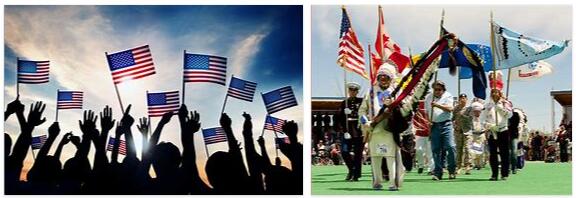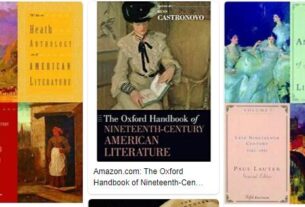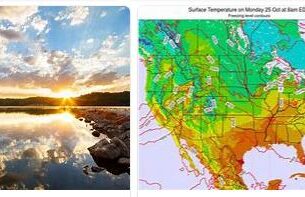The USA forms one of the largest political units in the globe, but above all from the point of view of economic power and industrial development it has a hegemonic position. The US population is not very high in number (it is largely surpassed by that of China and India) but it generally enjoys privileged living conditions – whether measured in per capita income or in energy or food consumption – compared to such as the conditions of certain countries of the so-called Third World they result from an abysmal distance. The realization of such a political unity is the violent and spectacular result of the human transplantation and the European capitalist idea into the best lands of North America, rich in space and resources; we can therefore say that the USA represents the “rejuvenation” of Europe and its industrial economy, essentially liberal, built on the Atlantic shores of the Old Continent. However, they have gradually detached themselves from Europe, giving rise to original forms of human organization, although not yet “coagulated” in a real culture, but always prompted by free conquest (achieved through an enrichment process carried out in even exasperated ways) of geographically favorable territories, as well as activated by the new planetary relations made possible at the same time by the enormous industrial and technological progress achieved by the country and by its fruitful position between Europe and the Far East. United States is a country located in North America according to MATHGENERAL.COM.
With the growth of the USA, in fact, the whole world geography has changed and new balances have been established in the different regions of the Earth. As a great power, the US conditions life and economy of a large part of the world, even arousing processes of acculturation that are measured in the emulation of typically American ideologies, mental schemes and behavior models. With the intertwining of ethnic groups, religions and traditions, the United States represents a model of multicultural society which, despite the challenges still to be faced, has been able to inspire a sense of national unity and a spirit of integration. Economically, the United States bases not a small part of its current power on the expansion of its political and economic organization, so that we can speak of a new imperialism, which has imposed itself in different forms from that of the old European powers, but has been made penetrating.
CULTURE: UNESCO WORLD HERITAGE SITES
The cultural sites declared UNESCO heritage in the United States are the Mesa Verde National Park (1978); Independence Hall (1979); Cahokia Mounds Historic Site (1982); Puerto Rico Fortress and National Historic Site of San Juan (1983); Statue of Liberty (1984); Chaco Historical National Park (1987); Monticello and University of Virginia at Charlottesville (1987); Pueblo Taos (1992); Poverty Point archaeological site (2014); missions of San Antonio (2015); 20th century architectural works by Frank Lloyd Wright (2019).
CULTURE: TRADITIONS. EATING HABITS
American cuisine is very varied, thanks to the great cultural diversity of the population, but at the same time, homologating, for the incredible number of fast food chains. If a hamburger with fries and a soft drink continues to be the most consumed meal by Americans, lately in the United States regional cuisines and the choice of a consumption of whole and organic food have been re-evaluated, mainly dictated by the need to correct a style of life that has led to a widespread diffusion of obesity. If in New York the multicultural melting pot combines very different flavors, in New England and the Middle Atlantic there is a large consumption of fish. The cuisine of the Southern States, on the other hand, includes a mixture of African, European and Native American traditions with a preference for barbecue prepared with mainly pork meats served with spicy sauces. Americans consume mostly packaged foods, which have passed the strict control of the Food and Drug Administration and very popular are the hot dog and kebab stalls for quick and cheap meals, in addition to the typical lunch trucks, the vans serving hot food and drinks. The American breakfast is characterized by abundant doses of oat flakes or puffed rice, eggs and bacon, fruit juice; the midday meal is usually lighter, while the evening dinner remains the true reveal of US cuisine, along with Sunday lunch. Typical and main dishes are: the clambake, traditional picnic, planked meat (meat cooked in the oven on an oiled table), the hugely popular, huge steaks, often surrounded by baked potatoes drenched in syrup and fruit tarts.
The peanut butter and jelly sandwich is very popular for a snack, or the slice of white bread with peanut butter and jam. The great lord of the table, in the festive lunches, is the stuffed turkey, followed by the chicken king, that is, stewed with cream sauce, mushrooms and cherry, and from fried chicken. Americans are also big consumers of vegetables and grains and love corn cobs that are roasted or boiled and drizzled with butter and syrup. The cuisine combines sweet and spicy, as is appreciated in the numerous sauces, often used to garnish roasts. Finally, cakes and ice cream enter the American diet in abundance. The most popular drinks are milk, beer, brewed in the Midwest, iced tea from the South, and soft drinks, including various types of cola. Although in California vines are grown and a product of excellent quality is obtained, the consumption of wine with meals is still limited and is becoming more popular as an aperitif or after dinner. The wine from Italy and France is highly sought after. Whiskey remains the prince of spirits.



